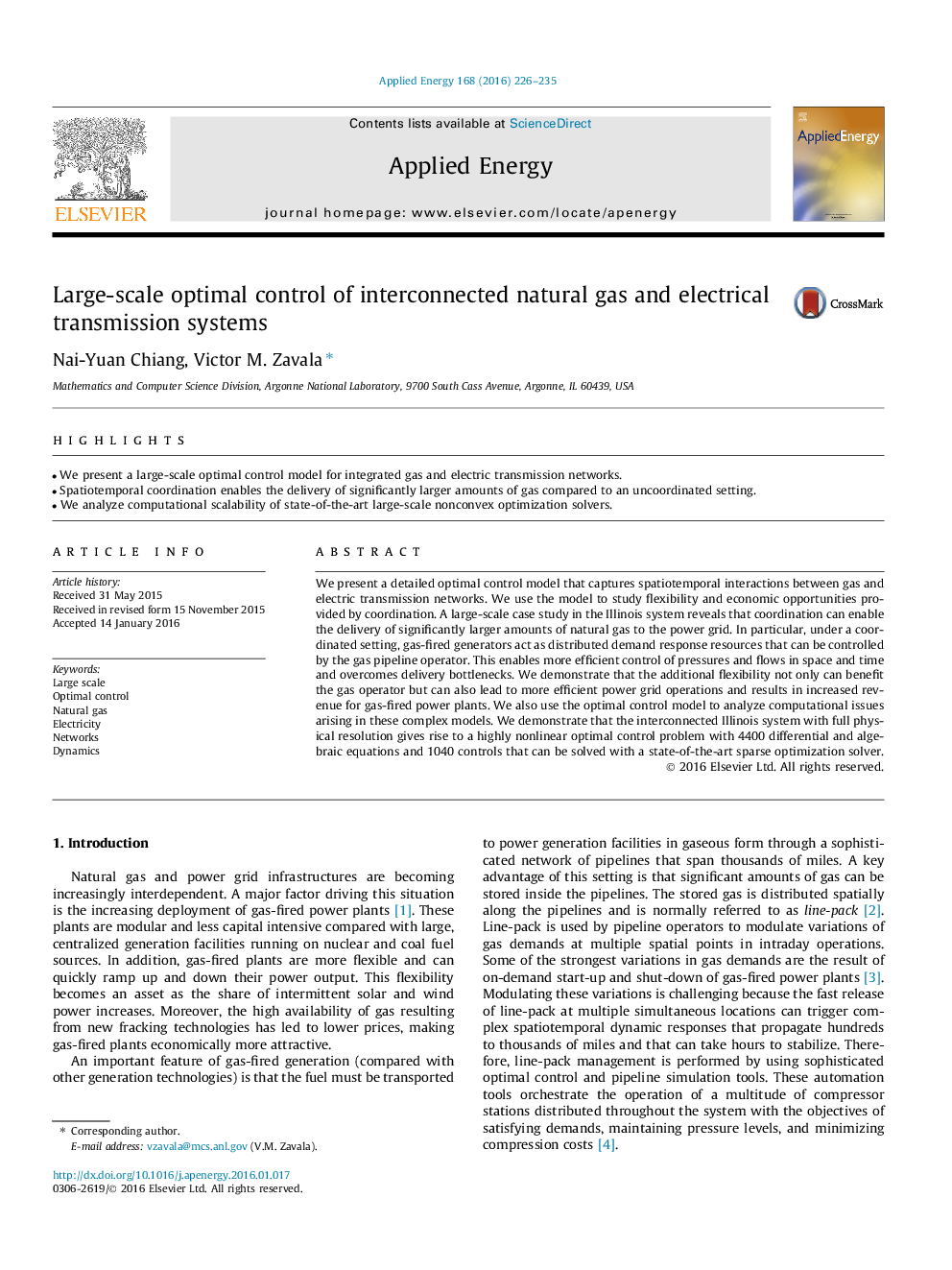| کد مقاله | کد نشریه | سال انتشار | مقاله انگلیسی | نسخه تمام متن |
|---|---|---|---|---|
| 6683723 | 501862 | 2016 | 10 صفحه PDF | دانلود رایگان |
عنوان انگلیسی مقاله ISI
Large-scale optimal control of interconnected natural gas and electrical transmission systems
ترجمه فارسی عنوان
کنترل بهینه در مقیاس بزرگ سیستم های انتقال گاز طبیعی و متصل شده
دانلود مقاله + سفارش ترجمه
دانلود مقاله ISI انگلیسی
رایگان برای ایرانیان
کلمات کلیدی
مقیاس بزرگ، کنترل بهینه، گاز طبیعی، برق، شبکه های، دینامیک،
ترجمه چکیده
ما یک مدل کنترل دقیق بهینه ارائه می دهیم که از تعاملات فضایی و زمانی بین شبکه های انتقال گاز و برق بهره می گیرد. ما از این مدل برای مطالعه انعطاف پذیری و فرصت های اقتصادی ارائه شده توسط هماهنگی استفاده می کنیم. یک مطالعه موردی در مقیاس بزرگ در سیستم ایلینوی نشان می دهد که هماهنگی می تواند تحویل مقدار قابل توجهی از گاز طبیعی به شبکه برق را فراهم می کند. به طور خاص، تحت تنظیمات هماهنگ، ژنراتورهای تولید شده توسط گاز به عنوان منابع پاسخ تقاضای تقسیم شده عمل می کنند که توسط اپراتور خط لوله گاز کنترل می شود. این باعث می شود کنترل بیشتری از فشار و جریان در فضا و زمان و تسریع تحویل به پایان برسد. ما نشان می دهیم که انعطاف پذیری اضافی نه تنها می تواند برای اپراتور گاز مفید باشد، بلکه می تواند به کارآیی شبکه های برق بیشتر منجر شود و منجر به افزایش درآمد برای نیروگاه های گاز شده با گاز شود. ما همچنین از مدل کنترل بهینه برای تحلیل مسائل محاسباتی ناشی از این مدل های پیچیده استفاده می کنیم. ما نشان می دهیم که سیستم ایلینویز همپوشانی با تفکیک فیزیکی کامل موجب مشکل کنترل بسیار مطلوب غیر خطی با 4400 معادله دیفرانسیل و جبری و 1040 کنترل می شود که می تواند با یک حل کننده بهینه سازی نزولی از حالت پیشرفته حل شود.
موضوعات مرتبط
مهندسی و علوم پایه
مهندسی انرژی
مهندسی انرژی و فناوری های برق
چکیده انگلیسی
We present a detailed optimal control model that captures spatiotemporal interactions between gas and electric transmission networks. We use the model to study flexibility and economic opportunities provided by coordination. A large-scale case study in the Illinois system reveals that coordination can enable the delivery of significantly larger amounts of natural gas to the power grid. In particular, under a coordinated setting, gas-fired generators act as distributed demand response resources that can be controlled by the gas pipeline operator. This enables more efficient control of pressures and flows in space and time and overcomes delivery bottlenecks. We demonstrate that the additional flexibility not only can benefit the gas operator but can also lead to more efficient power grid operations and results in increased revenue for gas-fired power plants. We also use the optimal control model to analyze computational issues arising in these complex models. We demonstrate that the interconnected Illinois system with full physical resolution gives rise to a highly nonlinear optimal control problem with 4400 differential and algebraic equations and 1040 controls that can be solved with a state-of-the-art sparse optimization solver.
ناشر
Database: Elsevier - ScienceDirect (ساینس دایرکت)
Journal: Applied Energy - Volume 168, 15 April 2016, Pages 226-235
Journal: Applied Energy - Volume 168, 15 April 2016, Pages 226-235
نویسندگان
Nai-Yuan Chiang, Victor M. Zavala,
